#Advanced Infusion System Market
Explore tagged Tumblr posts
Text
Unveiling the Power of Data: Global Advanced Infusion System Market
The advanced infusion system market is anticipated to increase in value from US$ 8,862.8 million in 2023 to US$ 16,536.9 million in 2033. Over the course of the forecast period, advanced infusion system sales are anticipated to grow at a noteworthy CAGR of 6.4%.
Preview Next-Level Insights Sample : https://www.futuremarketinsights.com/reports/sample/rep-gb-2026
Precise Dosing and Enhanced Patient Safety: Advanced Infusion Systems Take Center Stage
The global advanced infusion systems market is experiencing significant growth, driven by the growing demand for accurate and controlled medication delivery. These advanced systems offer significant advantages over traditional methods, promoting wider adoption within the healthcare field.
Tailored Treatments for Diverse Needs
Advanced infusion systems allow for the administration of fluids and medications through various routes, including:
Subcutaneous: Delivery of medication just beneath the skin.
Epidural: Delivery of medication into the epidural space, near the spinal cord.
Enteral: Delivery of nutrition directly into the stomach or small intestine.
Intravenous: Delivery of medication directly into the bloodstream.
Key Takeaways:
The global advanced infusion systems market is projected to reach US$16,536.9 million by 2033, reflecting a significant rise from US$8,862.8 million in 2023.
This growth is anticipated at a healthy compound annual growth rate (CAGR) of 6.4% throughout the forecast period.
The increasing adoption of advanced infusion systems for precise and controlled drug delivery is a key driver for market expansion.
Competitive Landscape:
Important Market Players Making Various Efforts to Gain an Advantage
The major players in the market for advanced infusion systems are always working together and putting out great effort to develop high-end infusion systems that will help patients by providing them with more sophisticated and equipped solutions.
Recent Developments
In January 2020, Medtronic (Ireland) Launched Efficio, a cloud-based data management software, for use with the SynchroMed II intrathecal drug delivery system. This enables clinicians to efficiently manage their targeted drug delivery pump practices to treat patients with chronic pain, cancer, and severe spasticity.
In March 2020, Q Core Medical Company opened a new manufacturing unit in Europe to capitalize on the opportunities offered by the advanced infusion systems market due to the increasing geriatric population and increasing demand for the adoption of infusion systems in healthcare, therapeutic effectiveness, and reliability.
Key Companies Profiled:
TERUMO CORPORATION
AIS HealthCare
B. Braun Medical Ltd
Medtronic
Baxter
MOOG INC.
armed ag
AVA Biomedical
BD
Smiths Group plc.
Advanced Infusion System Market:
By Product:
Elastomeric Infusion System
Volumetric Infusion System- Large Volume and Small Volume Pump
Patient Controlled Analgesia pump
Disposable Infusion System
Syringe Infusion System
Ambulatory Infusion System
Implantable Infusion System
By Application:
Chemotherapy
Diabetes
Pain management
Asthma
Clinical Nutrition
By End User:
Hospitals
Ambulatory Surgical Centers
Diagnostic centers
Bedside
By Region:
North America
Latin America
Europe
South Asia & Pacific
East Asia
The Middle East & Africa (MEA)
0 notes
Text
Advanced Infusion Systems Market Report | Size, Growth, Demand, Scope, Opportunities and Forecast 2022 to 2032
The global advanced infusion systems market is likely to be valued at US$ 8,470.25 million in 2022 and is predicted to secure a slow-paced CAGR of 6.4% during the forecast period. The global advanced infusion systems market is likely to be valued at US$ 8,470.25 million in 2022 and is predicted to secure a slow-paced CAGR of 6.4% during the forecast period. The market is expected to grow at a value of US$ 15,820.03 million by 2032. A historical CAGR of % has been recorded during the analysis by Future Market Insights. The market is expected to grow at a value of US$ 15,820.03 million by 2032.
Infusion systems are medical instruments and associated disposables, used to deliver fluids or drugs in solution to patient’s circulatory system in a controlled, precise and automated manner. There are different routes to introduce a drug into the patient’s system, of which, highly used mode is through intravenous, although subcutaneous, arterial and epidural infusion are preferred as per the requirement.
Request Sample Report @ https://www.futuremarketinsights.com/reports/sample/rep-gb-2026
They are simple devices and gravity controllers that employ a clamping action to vary the flow of liquid under the force of gravity. This instrument was extensively used for medication purpose but, due to association of high mortality rates with it, advanced infusion systems were developed. Facilities like easy start up, visual monitoring, mobility of system, balanced and continues infusion of multiple medications at the same time, patient safety are a few factors which are boosting the growth of the potential market of advanced infusion systems over conventional ones.
Advanced Infusion Systems Market: Drivers and Restraints
Overall increase in global population suffering from chronic disease, cancer, diabetes is the major factor that drives the market growth of global infusion systems market. Enormously developed technology in infusion system which eliminates user-related risks, higher bioavailability, safety, therapeutic effectiveness, increase in health care spending are also some other factors that drive the growth of the market.
To operate these automated infusion systems, a highly trained intelligent system is required. If this system is not trained properly, it can lead to increased morbidity and mortality rate which can restrain the growth of this market.
Advanced Infusion Systems Market: Overview
Over the last few decades volumetric and syringe pumps, the clinical and surgical industry, infusion systems, have been widely used for intravenous therapy (IV). Industry experts estimated that 80% of the hospitalized patients receive intravenous (IV) therapy. This demand is expected to increase in the coming years.
Growing incidence of chronic lifestyle disorders like cancer, diabetes and increased rate of aging population are the major factors that are expected to rise the demand for infusion pump market in forecast period. Increasing malnutrition in developing countries is expected to increase the demand for infusion pumps for critical nutrition. Hospitals are the largest end-users of infusion systems and account for over half of the market share.
Ask An Analyst @ https://www.futuremarketinsights.com/ask-question/rep-gb-2026
Advanced Infusion Systems Market: Regional Overview
Region wise, the advanced infusion system market is segmented into regions namely, North America, Latin America, Western Europe, Eastern Europe, Asia-Pacific, Japan and Middle East and Africa. North Americaholds the largest market share globally. The advanced infusion system market in Asia-Pacific and Latin America is expected to grow relatively fast in coming years. Factors expected to drive this growth are increase in population and increase in incidences of cancer, diabetes and asthma.
Advanced Infusion Systems Market: Key Players
Hospira, Inc., is a leading provider of infusion technologies globally. The key players in this markets are AngioDynamics, Inc., Animas Corporation, B. Braun Melsungen AG, Terumo Corporation and F. Hoffmann-La Roche Ltd. Infusion systems by Hospira, Inc. have operations in over 60 key markets across Europe, Asia and The Americas. Q Core Medical is a medical device company focused on the infusion pump market, which is expected to hold a large market share in the upcoming period.
Key Segments in The Advanced Infusion System Market
By Product:
Elastomeric infusion system
Volumetric infusion system- large volume and small volume pump
Patient Controlled Analgesia pump
Disposable infusion system
Syringe infusion system
Ambulatory infusion system
Implantable infusion system
By Application:
Chemotherapy
Diabetes
Pain management
Asthma
Clinical nutrition
By End-User:
Hospitals
Ambulatory Surgical Centers
Diagnostic centers
Bedside
By Region:
North America
Latin America
Asia Pacific
MEA
Europe
Ask For Customization @ https://www.futuremarketinsights.com/customization-available/rep-gb-2026
0 notes
Text
A Breakdown of Angelic Weapons

Because Vivzie hasn't made and likely won't make a concrete magic system and I read too many high fantasy books. My personal thoughts and headcanons about Angelic weapons, written mostly for my own fanfiction: Pride, Envy, Wrath, but anyone can use the ideas.
Angelic weapons are the primary tools of Heaven's armies and are valued due to the following properties:
the ability to rend the souls of immortal beings (passed on mortal souls such and Winners or Sinners, Demons and Angels) and bring about final death**
The ability to bypass most basic forms of magical defenses such as the invulnerability that Exorcists normally possess against attacks from Sinners.
The fact that any wound left by an angelic blade takes significantly longer to heal, even for beings with advanced regenerative abilities.
The abilities of angelic weapons come from the fact that wherever they cut the body, the weapon leaves an equivalent wound on the soul and causes damage far greater than mere flesh wounds. This is also believed to be the reason that such wounds leave scars that take years or decades to fade even on creatures with naturally potent Regeneration.
**While these weapons seem to deal final death to angels and demons, it seems that the natural willpower of human souls allows them to partially persist after ‘final death’. However, only fragments of the soul remain with little to no consciousness behind it. It is believed these broken souls have infused into the rings of Hell and are the cause of the many watching eyes seen throughout Hell. There is currently no known way for a soul to be restored after this fate.

How are these effects achieved: The ability to damage a living soul directly is due to the weapon being infused with holy energy at the time of its forging, this being drawn from the ambient energy given off an Angel's soul. Being infused with the nature of a soul at creation effectively allows it to become a weaponized extension of the soul to its user.
Drawbacks of Angelic Weaponry: While angelic weapons are typically superior to conventional weaponry in most respects, there are some slight drawbacks to their use:
They are not indestructible. Many people who get their hands on an angelic blade think they have found an unbreakable super weapon and become overconfident, leading to their own demise. While more durable, even the finest blessed steel will dull and lose its edge after extended use, needing to be sharpened and maintained like any other weapon.
This is the reason Exorcists drop weapons during exterminations, as the weapon tends to start losing its edge after a few dozen kills and becomes little more than a blunt instrument. Adam, being lazy, reasoned that carrying damaged weapons back to heaven would be dead weight, thus it would be better to leave them behind so Sinners can use them to kill each other… This logic backfired.
Due to the nature of the weapon, it draws a very small amount of energy from the user’s soul over the period of its use in combat. Very small, but notable. A person fighting with an angelic blade might exhaust themselves 3-5% faster than a person fighting with a mundane sword of the same design. This can vary due to the innate power of a person’s soul. For more powerful individuals such as Overlords and higher order Angels and Demons this drain is so small as to be negligible.
Availability and cost. While these weapons are easy to make and stockpile in Heaven, they are not so easy to procure in Hell and virtually unheard of in the mortal realm (it is theorized that legendary weapons of myth were merely angelic weapons that somehow made their way to mortal hands.) There are no ways for demons to make their own and the infernal magic given off by demon souls cannot recreate the soul rending effects of holy magic. Even with the supply to be found after Exterminations, Carmilla Carmine has cornered the market on the gathering and selling of holy arms which she tends to keep at prohibitively expensive prices.

Melee vs Ranged Weaponry:
The majority of angelic weapons to be found will be melee weapons simply due to the fact that they are easier to produce and the simple fact that they are the preferred tools of the Exorcist army. Exterminations have long been seen as an entertaining sport by the Exorcists and flying down to stab people is generally more fun than picking them off at range.
Ranged angelic weapons can exist and are used frequently but they have additional drawbacks. Primarily, the fact that for bows and guns both the ammunition and the items themselves need to be made using angelic steel. The reasons are unclear, but trying to pair angelic and mundane items tends to backfire. For example, an angelic arrow being strung on a mundane bow might cause the string to snap or an angelic gun trying to fire mundane bullets will misfire. This tends to press their use heavily against the previously discussed cost and availability drawback. While Exorcists can afford to waste a bunch of arrows, even Overlords wouldn’t dare waste holy bullets.
The topic of ‘Power’:
Not all angelic weapons are created equal and in the next section we will discuss the variations of their make and how each type varies in power. Before we do, one should clarify what ‘power’ means in this context, as it can be a nebulous concept without context. While the standard issue angelic weapon is only marginally sharper and more durable than mundane steel aside, more magically infused variants manifest further benefits. Primarily, increases in power result in greater strike force, penetrative ability vs both mundane and magical protections, and greater damage to the soul. To visualize that last point, imagine an angelic blade cutting a person and therefore their soul as a sharp knife cutting into a sheet of fabric. Now, to visualize a more powerful angelic weapon cutting into the soul, think of the effects on the fabric if the blade had been heated until it was glowing red. Greater heat will burn the fabric and cause far more damage than the mere cut itself.
Types of Angelic weapons: The varieties of Angelic weapons can be most easily broken down by their method of creation and the material being used. The most common varieties are the following:
Blessed Steel: the most common variation one may encounter and the primary tool of the Exorcist army. Made using an alloy of Steel and Silver that requires holy magic to create. Their appearance is usually Silver or white with a soft glow and generally feels cold to the touch. These are to be considered the most basic, standard weapons.

Holy Aurum: a much rarer variation made from an alloy of Silver, Steel, and Gold. Aurum angelic weapons are much more magically dense and offer both greater power and lower energy drain, being generally superior to Blessed Steel in all categories. Unfortunately, the process required to create and infuse the alloy is far longer and more taxing, thus Aurum weapons are generally only made on rare occasions to denote positions of authority, such as Lute’s sword. It is incredibly rare that any of these make it into Hell and royal Demon houses will typically trade fortunes in order to secure them as status symbols. They have a fully gold appearance, a brighter glow, and are often described as giving off a slight warmth.

Carmine Pattern: The Overlord Carmilla Carmine has found a rather unique method of melting down holy weapons and reforging them into improved versions. They can be identified by the glowing silvery patterns that cover their surface, which while this seems to be decorative, the designs serve an important function. The glowing designs help to circulate holy energy throughout the weapon more effectively, increasing the natural power of the weapon by a small degree. They are unfortunately not as effective as Aurum weapons but a noted improvement over standard blessed steel. Carmine also seems to be able to imbue the holy metal into many varieties of objects to create unique weapons such as Husk's playing cards or her own Angelic ballet shoes.

Relic Weapons: Do note that this is pure fanfiction territory, more so than anything else so far which is more or less canon+creative license but Relic Weapons are a concept I created for my own story that you can use in your own writing if you feel inspired.
Relic weapons are the ultimate form of angelic weaponry, greater than all other variations by orders of magnitude. The difference between a standard angelic weapon and an angelic relic is the difference between a butter knife and a high powered chainsaw. The name was given to them due to the fact that the majority of relic weapons were made thousands of years ago, used in the war started by Lucifer’s Fall (if there was an angelic rebellion in you fic, if not then they are just fucking old). Relic weapons are vanishingly rare, likely only held by the Archangels and possibly Lucifer and the other Sins, with any others being locked away tightly in the deepest parts of Heaven’s armory, but its possible that a handful of others could be floating around. All Angelic relics are made of Holy Aurum, though their creation takes far longer, much more magic and very specific rituals. The resulting weapons are not only far more powerful, but manifest several unique features:
Relic weapons form a unique bond with their user that allows the wielder to summon and dismiss the weapon at will, recall it from any distance, and sense the direction of the weapon if it has been separated from them. Due to the ability to recall the weapon at will, they are virtually impossible to steal. The only way to break someone’s bond to an angelic relic is to kill them or through very long rituals where the user must willingly part with the weapon.
Near weightlessness. Angelic relics, when held by their bonded user, weigh next to nothing, making them very easy to use. Even massive and impractical weapons are as light as any dagger. When touched by someone not bonded to them, they become as heavy as a normal weapon of their size if not slightly denser.
External force generation. The bond allows the user to tap into their own soul and draw energy that the weapon can amplify massively and direct outwards. A relic bow might be able to create arrows of pure light, or a blade will be able to make sweeping arcs of holy energy as it is cut through the air. Doing this does tend to be rather draining, especially if the user is not already blessed with a powerful soul such as an Overlord, Royal Demon, or High Ranking Angel and can result in exhaustion if not used carefully.
Enchantments. Relic weapons can be inscribed with enchantments during their creation that allow for additional abilities or even the ability to recreate magical spells. An example of this would be Adam’s guitar which has the ability to alter its form (changing from a guitar to an axe) and its size at the will of the user.

It should be noted that Angelic relics also possess an additional property that is much harder to understand. While the weapons are not sentient, they do tend to possess a kind of… will. Its not as if the weapon will fly off and do its own thing or talk to you, but Relics do have a habit of subtly acting in ways that no normal weapon should. This can manifest in the surface temperature of the weapon seeming to change in response to its bonded user’s emotions or attempts to bond with the weapon failing seemingly because the weapon ‘rejects’ the person. Sometimes a relic can even cause rituals to break the bond to fail. In extremely rare cases, if the user tries to use the weapon in a way that is extremely antithetical to the purpose of the relic’s creation, then it can become as heavy as lead and practically unmovable but this is probably about the most extreme example of the weapon’s will and almost never happens.
…
And… yeah, that's my thoughts on Holy Weapons. Did I need to do this? No. not even a little. Use the ideas or don’t, rewrite everything if you feel like it, I’m not your dad.
#pew au#pride envy wrath#hazbin hotel#hazbin hotel fanfic#Hazbin hotel headcanon#hazbin hotel theory#the author rambles#hazbin hotel thoughts#angelic weapons#I was possessed to write this
27 notes
·
View notes
Text
#SakuraSpiderArachnid #MarvelGames #Playstation7 #DearDearestBrands







Here's an overview for Sakura Spider: Arachnid, a PlayStation 7 game concept in collaboration with Marvel Comics and DearDearestBrands:
Game Concept: Sakura Spider: Arachnid
Platform: PlayStation 7
Genre: Action-Adventure, Open-World, RPG
Graphics Style: Manga-inspired, cel-shaded visuals with anime-like fluidity and dynamic aesthetic environments.
Story and Setting
Origin Story: The protagonist, Sakura Hoshino, is a kind-hearted artist living in Tokyo, struggling to balance her creative dreams with societal expectations. While sketching under a blooming Sakura tree, a spider—mutated by gamma radiation—bites her. This spider was created by an experimental cross between Oscorp and a mysterious gamma reactor stationed near the ancient cherry blossom grove.
She discovers new powers that reflect her artistic soul and emotional depth. Empowered with heightened empathy and a "sense of aesthetics," Sakura fights to protect her city from threats that challenge both its physical and cultural identity.
Setting: The game takes place in Neo-Tokyo, a sprawling city divided into diverse zones, including:
Shinjuku Skyline: Neon-filled high-rises with bustling nightlife.
Harajuku Haven: Fashion streets where creativity thrives.
Ancient Cherry Grove: Mystical Sakura trees, where her powers were born.
Tokyo Bay Industrial: A hub of Oscorp gamma experiments and toxic waste.
Gamma Underbelly: Secret Oscorp labs housing mutated creatures.
Cultural Market Streets: Places to gather inspiration and interact with NPCs.
Gameplay
Core Gameplay Mechanics:
Web Weaving: Manipulate webs to craft weapons, art-based traps, and shield barriers.
Aesthetic Aura: Use the protagonist’s power of "Aesthetic Empathy" to influence NPCs, calm enemies, and rebuild damaged zones.
Emotion Threads: Unlock emotional-based superpowers like "Gamma Kindness" (healing) and "Empathy Strike" (disabling enemies).
Sense of Design: Use her artistic abilities to restore monuments, graffiti walls, or design costumes with bonuses.
Combat System:
Manga-styled action sequences with combos tied to her "Spider Dance," a fusion of web attacks and Sakura petal-themed strikes.
Dual attack modes:
Stealth Mode: Silent takedowns using web camouflages.
Empathy Combat: Disarm and pacify enemies with emotional insight.
Exploration and City-Building: Restore zones by infusing aesthetics into Neo-Tokyo, converting drab areas into thriving artistic hubs. Gain resources to improve the city’s visual beauty and morale.
Supporting Cast
Takashi Hoshino (Brother): A robotics prodigy who creates her gadgets.
Rika (Best Friend): A spirited fashion designer who helps craft outfits for stealth and combat.
Dr. Masako Arai: A former Oscorp scientist turned mentor who knows the truth about the experiments.
Gamma Mutant Villains:
The Sakura Swarm: A gang of mutant spiders spreading chaos.
Crimson Bloom: A rival powered by corrupted Sakura energy.
The Oscorp Shadow: An advanced AI controlling the gamma experiments.
Items and Utilities
Sakura Thread Enhancer: Boosts web strength.
Petal Shield: Blocks attacks while dazzling enemies.
Web Artistry Kit: Allows you to paint zones, creating buffs and influencing allies.
Kindness Vial: A rare item that unlocks massive area healing.
Art Style and Aesthetic
Cel-Shaded Graphics: The game embraces soft, manga tones with vivid cherry blossom effects.
Cultural Fusion: Neo-Tokyo blends traditional Japanese architecture with futuristic neon aesthetics.
Dynamic Seasons: The city changes based on Sakura's emotional state (e.g., blossoms flourish when morale is high).
Potential DLC and Expansions
The Gamma Grove: Explore an ancient Sakura forest that reveals the origin of the gamma mutation.
Spider-Verse Crossover: Features other Spider-heroes from the Marvel Universe.
Custom Costume Creator: Design Spider outfits with aesthetic perks.
Let me know how you'd like to expand any specific part of this concept!
https://chatgpt.com/share/6753d965-c084-8005-943f-9bf588ab1a16






Let's expand on gameplay ideas for Sakura Spider Arachnid! Here’s a detailed breakdown: Core Gameplay Mechanics 1. Swinging System: Fluid, physics-based web-swinging similar to Spider-Man PS5, but with a unique Sakura twist. Players can unlock aerial tricks and advanced web-swinging techniques that leave trails of glowing Sakura petals. Special “Gamma Burst Swing” mechanic allows for high-speed traversal across long distances. 2. Empathy Powers: Instead of relying on brute force, Sakura can resolve conflicts using her Empathy Webs, which calm or convert hostile enemies. Players must strategically decide when to use empathy or combat, altering NPC behavior and story outcomes. 3. Sense of Aesthetics: Sakura can identify weak points in environments or enemies using her aesthetic sense. This ability highlights climbable surfaces, destructible objects, or secret pathways. 4. Combat: Fast-paced, martial-arts-inspired combat blending acrobatics and web abilities. Sakura's “Petal Fury Mode” unleashes rapid attacks surrounded by an aura of glitter and petals. Gamma-powered moves, like the “Blossom Smash”, deliver heavy-hitting crowd control effects. World Design 1. Zones: Shibuya District: Neon-lit streets, bustling crowds, and vertical challenges with towering billboards. Sakura Temple Grounds: A tranquil area with hidden challenges and spiritual puzzles tied to Sakura’s origin. Gamma Research Facility: Heavily guarded industrial zone, featuring stealth-based missions and tech puzzles. Skyline Heights: High-rise corporate buildings for intense web-swinging sequences and rooftop battles. 2. Interactive Elements: Players can interact with Tokyo’s citizens, from helping lost children to stopping random crimes. Sakura can create web-art murals using leftover Sakura petals to inspire kindness in the city. Supporting Cast 1. Yuto Tanaka (Mentor): A scientist who explains the origin of the gamma spider and guides Sakura on using her powers. 2. Hana Kuroki (Best Friend): Provides comic relief and helps design Sakura’s webbing gear. 3. Villains: The Steel Ronin: A cyber-samurai enhanced by gamma technology. Shade Widow: A rival spider-powered character who represents Sakura’s dark potential. Items and Utilities 1. Petal Webbing: Unique webs that can heal allies or immobilize enemies. 2. Aesthetic Vision Goggles: Enhances Sakura’s ability to spot hidden objects or see through illusions. 3. Gamma Infuser: Temporarily boosts Sakura’s abilities during intense battles. Side Quests and Activities 1. Sakura Bloom Restoration: Revive wilted Sakura trees around the city to boost morale. 2. Fashion Challenges: Use Sakura’s sense of aesthetics to help NPCs with design challenges. 3. Street Performances: Sakura can perform aerial stunts for Tokyo’s citizens to earn reputation points. Visual Style and Aesthetic 1. Vibrant, anime-inspired graphics with photorealistic details. 2. Dynamic lighting changes based on Sakura’s emotions, such as a glowing aura during high-stress moments. Let me know if you'd like to focus more on any specific part, such as storyline, mechanics, or visual design!







Here’s a detailed Character Profile for Sakura Hoshino, the heroine of your game:
Character Profile: Sakura Hoshino
Full Name:
Sakura Hoshino
Alias:
Sakura Spider Arachnid
Age:
23 years old
Origin:
Tokyo, Japan
Occupation:
Web-slinger, Protector of Tokyo
Fashion Designer (Side Hobby)
College Graduate (Specializing in Environmental Design and Aesthetics)
Appearance
Height: 5'8"
Build: Athletic, with a lean and toned physique
Hair: Long, flowing pastel pink hair with subtle highlights of soft yellow, often tied in a loose ponytail when active.
Eyes: Deep, vibrant purple with a glimmer of white, reflecting her inner strength and empathy.
Skin: Fair, with a soft glow, showing the effects of gamma radiation exposure.
Suit:
Design: A sleek, high-tech spider suit infused with Sakura blossom patterns. The suit’s base color is pastel pink, accented with a soft yellow hue and glowing threads of white to represent Sakura petals.
Webbing: High-tech, metallic webs that glow with a Sakura petal motif.
Additional Features: The suit features a glowing "Sakura Core" in her chest, symbolizing her connection to the mystical Sakura tree that gave her powers.
Backstory
Sakura Hoshino was an ordinary university student studying environmental design, passionate about nature and art. During a visit to a traditional Japanese shrine, she stumbled upon a sacred Sakura tree rumored to be connected to ancient gamma radiation experiments. While sketching its beauty, she was bitten by a rare spider that had been exposed to this radiation. The bite merged with her body, giving her the ability to manipulate webs with both physical and emotional force. Her deep connection to nature and aesthetic design also enhanced her powers, giving her a unique ability to sense beauty, calm aggression, and heal emotional wounds.
After the incident, Sakura was thrust into a dual life: one as a protector of Tokyo, and the other as a budding fashion designer seeking to express herself and promote kindness. She uses her powers to combat crime and solve conflicts without violence, utilizing empathy and aesthetics as her main weapons. Sakura now fights to protect her city while balancing her personal dreams and responsibilities.
Personality
Compassionate: Sakura’s defining trait is her deep empathy. She can sense the emotions of others and, when necessary, uses her powers to help heal emotional wounds.
Optimistic: Despite the challenges she faces, Sakura believes that beauty and kindness can bring change. She strives to bring peace in a world filled with chaos.
Creative: As an artist at heart, Sakura views the world through an aesthetic lens. She finds beauty even in the darkest of places and uses her creativity to solve problems.
Courageous: Sakura faces dangers head-on, often with a sense of grace. Her bravery isn’t defined by a desire for glory, but by her commitment to protect those she loves.
Determined: Sakura has a strong sense of justice and never backs down from doing what’s right, even if it means making personal sacrifices.
Abilities and Powers
Web-Slinging: Sakura can create webs of varying sizes and strengths, using them to swing between buildings, immobilize enemies, or create structures. Her webs are unique in that they also carry emotional energy, calming or subduing opponents.
Empathy Webbing: Her webs can carry a calming aura, making her opponents feel peace or empathy. This ability helps resolve conflicts without violence, but can also be used strategically to weaken enemies.
Aesthetic Vision: Sakura has an enhanced sense of aesthetics, allowing her to perceive hidden details in her environment, like weak structural points or hidden pathways. It also helps her find beauty in unexpected places.
Gamma Boost: Occasionally, Sakura’s connection to the gamma radiation grants her temporary boosts in power, enhancing her physical strength, agility, and the reach of her webs.
Healing Touch: Through her deep empathy, Sakura can heal minor emotional or physical wounds in herself or others. This ability also allows her to calm her allies in intense situations, restoring their morale.
Sakura Blossom Fury: A powerful, high-speed attack where Sakura releases a flurry of webs imbued with Sakura petals, overwhelming opponents with both speed and beauty.
Strengths
Diplomatic: Sakura prefers to solve problems peacefully, using her powers to mediate conflict rather than engage in violence.
Adaptable: Her aesthetic sense allows her to think on her feet and adapt to any situation creatively.
Agile and Fast: Her physical training and spider abilities make her incredibly nimble, able to navigate the city’s skyline with grace and precision.
Weaknesses
Emotional Vulnerability: While her empathy is her greatest strength, it also makes her susceptible to emotional exhaustion. Overuse of her empathy can leave her drained.
Gamma Exposure: Extended exposure to gamma radiation may occasionally cause her to lose control of her powers, leading to instability in her emotional balance.
Over-reliance on Non-Violence: Sakura’s preference for peaceful resolutions can sometimes put her in dangerous situations where more forceful methods may be needed.
Relationships
Yuto Tanaka (Mentor): A scientist who understands the origins of the gamma radiation and guides Sakura in controlling her powers. He is a father figure and the one who encouraged her to embrace her new abilities.
Hana Kuroki (Best Friend): Sakura’s best friend and confidante. Hana supports her throughout her journey, both in her heroic duties and personal life.
Villains:
The Steel Ronin: A dark counterpart to Sakura, a cyber-enhanced warrior who is bent on destroying the harmony Sakura seeks to protect.
Shade Widow: A mysterious figure whose own emotional turmoil mirrors Sakura’s, leading to a rivalry built on both their powers and inner conflicts.
Catchphrase:
"Beauty is the strength we need to protect the world."
War Of The Roses!!!
#playstation7#deardearestbrands#ps7#digitalconsole#Sakura Spider arachnid#marvelGames#DearDearestBrands
4 notes
·
View notes
Text
Low-code Development Platforms: Build an app through Graphical User Interfaces

Amidst the growing demand for digital transformation across the businesses in all domains, building an application following the traditional mobile application development process becomes a bewildering challenge. Businesses want to integrate more digital transformation into the operational processes, and this calls upon the need to speed up application development by using advanced tools and technologies.
This calls upon the need to adopt low-code-development platforms for quick business transition and seamless growth. According to PS Intelligence in 2018, the global low-code development platform market was valued at 5.6 billion USD and is expected to reach 52.3 billion USD by 2024, progressing at a CAGR of 45.2% during the forecast period.
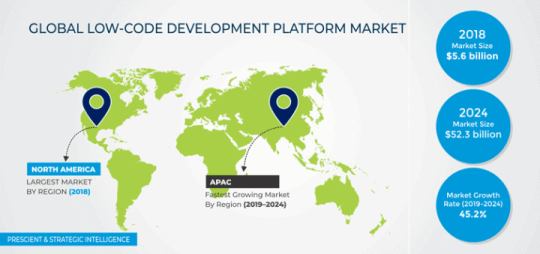
With these platforms, the web and mobile developers do not write long codes; instead, the entire application development process includes visual elements along with drag and drop actions.
What is low-code development?
Low-code development is an application development approach that accelerates the development process by infusing visual elements and eliminate the need for manual coding for faster delivery.
Features of Low-code development platforms
A low code development platform incorporates extensive features that make it a must-have platform for business organizations to stay ahead of the competition. These features include:
Visual scripting: You can create an application module or whole application in a drag and drop like interface where you don’t have to write a single line of code. As programming code is more visual, it needs less thinking to be understood.
Visual modeling: Allows converting business ideas into workflows with UI elements such as data models, notifications, events and more.
Data remodeling: Seamlessly converts data models into APIs and relational tables.
Mobility: Integrated with mobility mechanism that makes the application more responsive over mobile devices.
Security: Access management features give you full control over the application. You can manage who can view your application and when.
App life-cycle management: Low code development principles simplify deployment and maintenance while making the app more scalable.
Rules engine: Simplifies the process to define business logic through an in-built rule engine. Rule engine provides a development environment for coders to create applications through GUI and not actual programming code.
Hosting: Any rich user interface requirement can be settled by hosting custom code through the low development app platform.
Integration: Easy integration with third-party applications and systems via APIs and connectors.
Components of low-code development platform
Low code platform, also known as Rapid Application Development, allows both professional developers and non-developers like business managers or any IT professional who doesn’t know how to code but understands business logic to build and deploy web and mobile applications in few days or weeks. Few components of Low-code development platform include:
Continuous integration: The automated system picks up the latest version from the build, repository, test and validates the master file for deployment.
Reusability: Allows developers to switch from one project to another with ease, identify and resolve the problems efficiently while increasing the quality of the application portfolio.
Omnichannel app development: One code base for different devices enable developers to target problems right from one single platform.
Openness and extensibility: Using Cloud-based architecture, the developers can deploy applications quite easily and efficiently.
Performance: The integration of automated testing and quality monitoring makes these apps perform faster.
Connectivity: Empower users with extensive connectivity over IoT devices, Blockchain, Artificial Intelligence, and Machine Learning without the need to have expert knowledge.
Deployment: Public cloud integration offers scalability and reliability with a reduced need for maintaining the infrastructure.
youtube
What can you build with low code?
Internal applications: Low code allows creating beautiful, and advanced applications for the Business internal processes.
Customer-facing applications: Enables creating digital customer-focused and field focused applications with an immersive UI while incorporating easy accessibility and extensive usability.
Legacy modernization apps: Transform your CRM, ERP and other core business systems through low code development capabilities without impacting the regular business activities.
Operational efficiency apps: Low code application development helps to build apps that boost your business productivity to a remarkable extent.
Benefits of a low-code development platform
Low code application development is easy to use, integrate and deploy in the business infrastructure. Not only it is easy to build an app with the no-coding approach, but these apps are highly efficient and work on cross-platform devices. Some of the scalable features include:
Improved agility: Accelerate digital innovation and business transformation by building a responsive application using a quick to build approach.
Higher productivity: Lesser coding with automated testing, database handling, scaling, one-click deployment capabilities results in yielding higher productivity and better results.
Decreased cost: Low code application development doesn’t demand to deploy hardware components as its cloud-based and thus proves to be a cost-efficient app development approach.
Effective risk management and governance: Since everything is available on the cloud and can be managed from one interface, risk management becomes easier.
Faster transformation: With a low code development approach, the developers can build more apps in lesser time. Easy deployment and management results in faster business transformation.
Change easily: With drag and drop elements and simple visual components, it’s extremely easier to change the application at any point in time.
How low-code platforms are transforming software development?
Low code platforms integrate powerful features such as citizen development that enables users with even no technical knowledge to code the program. These single interface platforms are cloud-based and offer ease of usability that adds to transform software development.
5 best low-code development platforms in 2020
1) DWKit
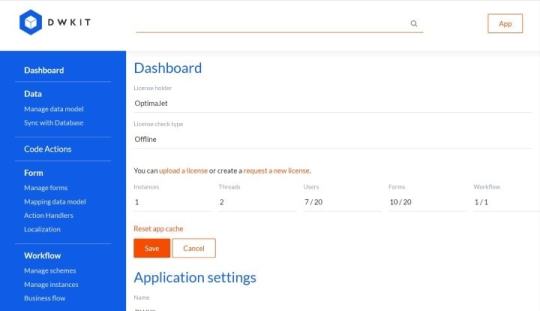
DWkit is an efficient low code development program packed with effective features. It is a form builder, security, workflow, and data mapping application.
Link: Web
2) Appian
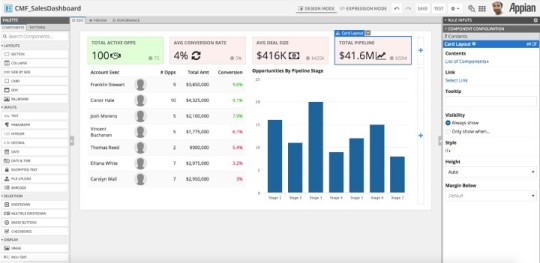
The platform offers native AI services with zero-code integration to ML/AI platforms through Amazon AWS, Microsoft Azure and Google Cloud.
Link: Web
3) Visual LANSA

Visual LANSA is an effective and powerful platform for developing web, mobile, and desktop applications. It features extensive application testing, deployment, and integration tools.
Link: Web
4) KissFlow
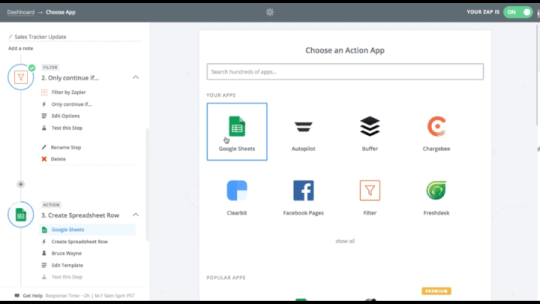
Eliminates the need to code your application completely with KissFlow. Drag and drop tools to build tasks and fields as well as to add and edit various fields.
Link: Web
5) Mendix
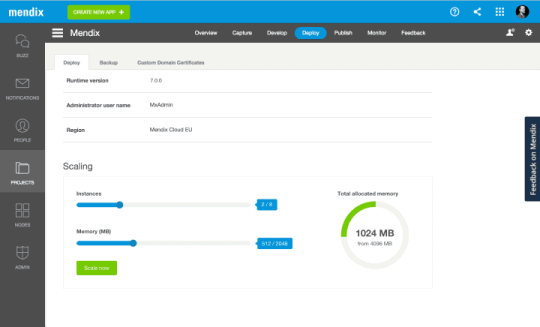
Integrates highly advanced visual modeling tools and reusable components. Agile project management capabilities make it more powerful.
Link: Web
How TechAhead can help you in low-code development?
If you are looking for a low code development platform for your business and don’t know where to get started, TechAhead is here to help you build enterprise-grade apps quickly and efficiently for complete business transformation.
Final words
Low code platforms allow developers to create mobile and web apps without coding using drag and drop options. These platforms are an efficient way for mobile app development companies to get more done in case of apps with limited functionality.
Frequently Asked Questions (FAQs)
What is the low-code development platform? Low code development is an application development platform that eliminates the need for heavy coding while building an app. It includes visual elements and drag and drop tools that enable building creative, powerful and responsive apps for businesses.
Does low code mean no-code? Low code development platforms include coding, but not as much as that of traditional application development approaches.
How do low code platforms facilitate digital transformation? Applications build using low code platforms help businesses cope up with the rising market demands and help them stay ahead of the competition.
How to identify a low code platform for enterprise-grade apps? A good low code development platform is one that includes capabilities such as:
Cognitive intelligence
Change management
Simple prototype development
Citizen development
Easy requirement gathering
Integration readiness
1 note
·
View note
Text
Leading Villa Developers in Jigani Bangalore
Chandrakantha villas present a lifestyle infused with elegance and comfort, where every detail speaks of luxury. Based in Jigani, Chandrakantha Leading Villa Developers in Jigani Bangalore has carved a niche for itself with stunning villas designed for modern living. This article explores the remarkable amenities that make these villas a top choice for discerning homeowners.
Luxurious Living Spaces: Design and Features
Spacious and Well-Ventilated Villas
Chandrakantha villas average around offering ample space for families. With options ranging from three to five bedrooms, these villas feature open floor plans that encourage natural light and airflow. Compared to the market average, these homes provide 20% more living space, enhancing comfort and functionality.
High-Quality Construction Materials and Finishes
Every villa showcases premium materials. From the elegant marble flooring to granite countertops, quality is evident throughout. The fixtures used meet industry standards, ensuring durability alongside aesthetic appeal. Additionally, each home adheres to eco-friendly building practices.
Smart Home Technology Integration
Chandrakantha villas come equipped with advanced smart home features. Homeowners can control lighting, security systems, and temperature through mobile apps. This not only boosts convenience but also enhances energy efficiency, leading to lower utility bills.
Resort-Style Amenities: Relaxation and Recreation
Swimming Pool and Clubhouse
The development boasts a large, beautifully designed swimming pool. Residents can enjoy weekend gatherings or simply unwind in style. The clubhouse hosts various activities, from yoga classes to community events, fostering social interactions among neighbors.
Landscaped Gardens and Recreational Areas
The sprawling gardens include walking trails, playgrounds, and picnic areas. With over 30% of the area dedicated to green spaces, residents enjoy a refreshing environment. Families can spend weekends in nature, creating lasting memories.
Fitness Center and Gym Facilities
The fitness center is well-equipped with modern machines and offers group classes like Zumba and yoga. Residents can engage with fitness professionals who provide guidance and support, making health a priority in this community.
Community and Security: A Safe and Secure Environment
24/7 Security and Surveillance
Safety is paramount at Chandrakantha villas. The property features round-the-clock security personnel and CCTV surveillance. Strict access control measures ensure peace of mind for residents and their families.
Community Building Initiatives
Chandrakantha promotes a sense of belonging through various community events such as festivals and sports tournaments. These initiatives help residents connect, fostering friendships that last a lifetime.
Strategic Location and Easy Access to Amenities
Located in Jigani, the villas boast proximity to essential amenities. Top schools, hospitals, and shopping centers are just minutes away. This convenience enhances the living experience, making daily chores hassle-free.
Investing in Your Future: Financial Considerations and Value
Competitive Pricing and Payment Plans
Chandrakantha villas offer competitive pricing tailored to today's market. Flexible payment plans make it easier for buyers to invest in their dream homes. Prospective homeowners can benefit from financing options that suit their budgets.
Potential for Appreciation and ROI
Homebuyers can expect good property value appreciation in the coming years. Real estate analysts have noted the upward trend in Jigani, making it a smart investment choice. Many homeowners have already seen significant returns on their properties.
Developer Reputation and Track Record
Chandrakantha realestate developers in jigani Bangalore is known for its commitment to quality. With a history of successful projects, the developer has established a reputation for excellence. Homebuyers can trust in the quality and longevity of their investment.
Conclusion: Your Dream Home Awaits
Chandrakantha villas in Jigani offer a blend of luxury, comfort, and community. With outstanding amenities and a secure environment, it’s a perfect choice for families looking to settle down. Don’t miss out on this opportunity—learn more about Chandrakantha Villa Developers and discover your dream home today. Visit Chandrakantha Villa Developers for more information or contact them directly for inquiries.
0 notes
Text
Can AI Ad Generator Replace Human Creativity in Advertising?
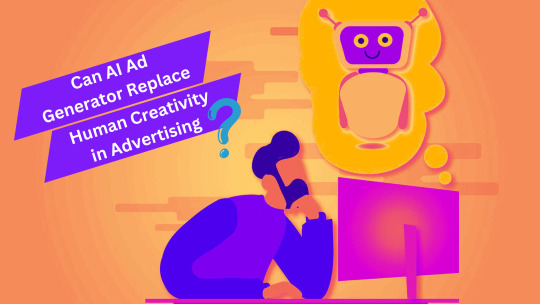
The technologies we use to develop compelling campaigns are changing quickly along with the advertising industry. One of the most discussed advancements is the rise of artificial intelligence (AI) in advertising, particularly the development of AI-powered systems that can generate ads. This shift has sparked a debate: can these automated systems replace the creative minds behind ad campaigns? While AI has undoubtedly brought efficiency and innovation to the industry, human creativity remains at the heart of effective advertising.
In this blog, we explore the potential of AI-generated advertisements, their limitations, and the enduring importance of human input in crafting meaningful, engaging ads.
The Rise of AI in Advertising
These days, AI algorithms can comprehend consumer preferences, create individualized ad content based on data-driven insights, and even create campaign visuals. The introduction of an AI ad generator, for instance, allows marketers to produce advertisements quickly and at scale by feeding algorithms with inputs like audience demographics, past campaign data, and market trends.
These automated systems can handle repetitive tasks like copywriting, generating banners, or testing various ad versions to determine which performs best.
The Role of Human Creativity

Effective advertising is about more than just data and algorithms. It is about storytelling, building relationships, and creating a brand identity that resonates with people. A skilled marketer or copywriter can infuse emotion, humor, and empathy into an ad, making it relevant. These human qualities add an authenticity to the advertisement that AI, at least for now, struggles to replicate.
Furthermore, creativity often involves thinking outside the box, taking risks, and exploring unconventional ideas. While AI is good at optimizing based on patterns and past success, it may lack the imagination to push boundaries and create groundbreaking concepts that capture the audience’s attention in new ways.
The Strengths of AI in Advertising

AI can analyze customer behavior, predict trends, and generate highly targeted content, allowing marketers to reach the right audience with the right message at the right time.
For instance, an AI-powered system can help a company create hundreds of ad variations in a short period, testing them in real time to determine which ones perform best. This data-driven approach ensures that ads are continuously optimized for better engagement and conversion rates. However, these strengths are most impactful when human expertise is guiding the process.
The Limitations of AI in Ad Creation
AI-generated content can sometimes feel formulaic, repetitive, or lack the spark of originality that makes ads truly memorable. Ads that evoke emotion or challenge societal norms often require a level of creative risk that AI is not equipped to handle. For example, successful campaigns like Dove’s “Real Beauty” or Nike’s “Just Do It” not only convey a message but also tap into deep cultural values and human experiences.
Another difficulty is that AI is only as effective as the data it receives. Human oversight is required to ensure that content resonates with the intended audience and adheres to ethical norms.
Finding the Right Balance

The ideal approach blends the strengths of both. AI can handle data-heavy, repetitive tasks such as ad targeting, optimization, and content generation. Meanwhile, human marketers and creatives can focus on the bigger picture—crafting stories, building brand identities, and developing innovative concepts that engage and inspire consumers.
By combining AI and human expertise, brands can build advertising campaigns that are not only efficient and data-driven, but also relevant and emotionally resonant.
Also, watch this video - How To Create High-Converting AI Tools Ads with AdsGPT?
youtube
Wrapping Up
AI ad generator offer valuable tools for enhancing efficiency and targeting precision in advertising, they cannot replace the unique qualities of human creativity. While AI is quite good at managing repetitive chores, analyzing data, and improving campaigns, it still struggles to create advertisements that defy conventional conventions or emotionally connect with viewers. The future of advertising lies in the collaboration between AI and human creatives, combining the best of both worlds to produce engaging, innovative campaigns that resonate with audiences. Human creativity, with its depth, intuition, and emotional intelligence, will continue to play an essential role in the advertising market.
1 note
·
View note
Text
The Importance of Private Equity Firms to Portfolio Companies

Investors acquire private equity by buying companies unlisted or delisted from the stock exchange. Private equity firms pool capital from different investors and acquire or invest in privately listed companies. Private equity investments are gaining popularity and credibility because they offer private businesses operational expertise, financing, and guidance. Private equity firms often invest in companies they believe have significant growth potential. The investment may span several years, with the private equity firm maintaining close contact with the company’s management to implement operational reforms and adjustments. Over time, the private equity firm may decide to sell its investment in the company at a higher price.
One way private equity firms help their portfolio companies grow is by providing operational expertise. Private equity firms conduct due diligence before investing in any company. In the process, they often take note of lapses inherent in the organization’s operational framework. These lapses might include inefficient decision-making processes, the absence of proper employee training and development, and poor performance management systems.
The reforms initiated by private equity firms may help companies optimize operational performance and drive profitability. These reforms may include ensuring proper inventory management, adopting cost-saving mechanisms, and improving supply chain operations. Since private equity firms have easy access to capital, they usually help the companies deploy advanced performance measurement tools and management practices like balanced scorecards (BSC), key performance indicators, (KPIs), and performance dashboards that monitor and evaluate employee performance and efficiency across all levels. These tools usually help portfolio companies make data-driven decisions that improve their daily operations and help them achieve long-term growth.
Private equity firms infuse capital that helps portfolio companies expand operations into new markets or locations. With capital infusion, portfolio companies can pay off existing debt and improve their balance sheet.
Private equity firms are often behind portfolio diversification, strategic repositioning, market consolidation, and mergers and acquisitions that accelerate and foster growth. Because private equity firms are poised to create value, they often encourage collaboration that reduces costs, advances operations, and improves market positioning.
Private equity investors provide their portfolio companies with industry connections. Since many private equity investors are seasoned and successful professionals in technology, finance, energy, and real estate, they have connections to help their portfolio companies achieve strategic partnerships.
Portfolio companies might face challenges in recruiting the best talents. Due to their extensive experience and connections in a wide range of industries, private equity firms usually have a pool of some of the best talents in their industry. They often help portfolio companies recruit successful and experienced employees both at the junior management levels.
Private equity investors usually provide their portfolio companies with exit strategies to help their business scale and make it attractive to other investors. For instance, private equity investors can take the necessary compliance and administrative measures to prepare portfolio companies for their initial public offering (IPO). After an IPO, the company is listed on the stock exchange, and the public can invest in it. Similarly, exit strategies like strategic acquisition or trade sales that involve selling the portfolio company to another established and successful company might help the portfolio company break into new markets and scale its operations.
0 notes
Text
Global Advanced Infusion System Market : A Deep Dive into Key Drivers and Trends
The advanced infusion system market is on a significant growth trajectory, with its valuation anticipated to rise from USD 8,862.8 million in 2023 to an impressive USD 16,536.9 million by 2033. This substantial growth is expected to occur at a compound annual growth rate (CAGR) of 6.4% over the forecast period.
Advanced infusion systems play a critical role in modern healthcare, providing precise and controlled delivery of medications, nutrients, and other fluids to patients. These systems are essential for a wide range of medical treatments, including chemotherapy, pain management, and critical care.
Since advanced infusion systems are widely used to administer drugs and fluids to patients for therapeutic purposes, their utilization has increased. The most popular methods for administering fluids with the use of an infusion system include enteral, subcutaneous, epidural, and intravenous.
Request Your Detailed Report Sample With Your Work Email: https://www.futuremarketinsights.com/reports/sample/rep-gb-2026
Precise Dosing and Enhanced Patient Safety: Advanced Infusion Systems Take Center Stage
The global advanced infusion systems market is experiencing significant growth, driven by the growing demand for accurate and controlled medication delivery. These advanced systems offer significant advantages over traditional methods, promoting wider adoption within the healthcare field.
Tailored Treatments for Diverse Needs
Advanced infusion systems allow for the administration of fluids and medications through various routes, including:
Subcutaneous: Delivery of medication just beneath the skin.
Epidural: Delivery of medication into the epidural space, near the spinal cord.
Enteral: Delivery of nutrition directly into the stomach or small intestine.
Intravenous: Delivery of medication directly into the bloodstream.
Key Takeaways:
The global advanced infusion systems market is projected to reach US$16,536.9 million by 2033, reflecting a significant rise from US$8,862.8 million in 2023.
This growth is anticipated at a healthy compound annual growth rate (CAGR) of 6.4% throughout the forecast period.
The increasing adoption of advanced infusion systems for precise and controlled drug delivery is a key driver for market expansion.
Competitive Landscape:
Important Market Players Making Various Efforts to Gain an Advantage
The major players in the market for advanced infusion systems are always working together and putting out great effort to develop high-end infusion systems that will help patients by providing them with more sophisticated and equipped solutions.
Recent Developments
In January 2020, Medtronic (Ireland) Launched Efficio, a cloud-based data management software, for use with the SynchroMed II intrathecal drug delivery system. This enables clinicians to efficiently manage their targeted drug delivery pump practices to treat patients with chronic pain, cancer, and severe spasticity.
In March 2020, Q Core Medical Company opened a new manufacturing unit in Europe to capitalize on the opportunities offered by the advanced infusion systems market due to the increasing geriatric population and increasing demand for the adoption of infusion systems in healthcare, therapeutic effectiveness, and reliability.
Key Companies Profiled:
TERUMO CORPORATION
AIS HealthCare
B. Braun Medical Ltd
Medtronic
Baxter
MOOG INC.
armed ag
AVA Biomedical
BD
Smiths Group plc.
Advanced Infusion System Market:
By Product:
Elastomeric Infusion System
Volumetric Infusion System- Large Volume and Small Volume Pump
Patient Controlled Analgesia pump
Disposable Infusion System
Syringe Infusion System
Ambulatory Infusion System
Implantable Infusion System
By Application:
Chemotherapy
Diabetes
Pain management
Asthma
Clinical Nutrition
By End User:
Hospitals
Ambulatory Surgical Centers
Diagnostic centers
Bedside
By Region:
North America
Latin America
Europe
South Asia & Pacific
East Asia
The Middle East & Africa (MEA)
0 notes
Text
Therapeutic Vaccines: A Promising Avenue to Treat Chronic Diseases

The Evolution of Vaccines as Therapeutics Vaccines are traditionally known for their ability to boost immunity and prevent infectious diseases. However, research over the past few decades has shown their potential to be used as therapeutics for treating various chronic medical conditions. Scientists have worked on repurposing vaccine technologies that were initially developed for prevention to instead stimulate the immune system into attacking diseases. This novel therapeutic approach has opened up opportunities for addressing hard-to-treat illnesses. Cancer Immunotherapy through Vaccines Therapeutic Vaccines is promising areas has been using vaccines to fight cancer. Several therapeutic cancer vaccines are now in clinical trials or have received regulatory approvals. These function by training the immune system to identify and attack cancer cells. For example, Provenge was the first therapeutic cancer vaccine approved by the FDA for treating advanced prostate cancer in 2010. It works by collecting a patient's own white blood cells, activating them against prostate cancer cells in the lab, and then infusing the activated immune cells back into the patient. This encourages the immune system to assault the cancer. Other cancer vaccine candidates target melanoma, pancreatic cancer, breast cancer, and blood cancers. Researchers are also exploring combination therapies using vaccines along with checkpoint inhibitors. Autoimmune and Neurodegenerative Disease Applications Beyond oncology and virology, therapeutic vaccination is under study for various chronic inflammatory and neurodegenerative conditions. For instance, antigens from the rheumatoid arthritis joint have been incorporated into experimental vaccines to dampen overactive inflammation thought to drive joint damage progression. In multiple sclerosis, tests are evaluating whether vaccines can induce immune tolerance against MS-related antigens and reduce disease relapse rate. Alzheimer's disease research has focused on using amyloid-beta peptide antigens in therapeutic vaccines targeted at clearing amyloid plaques, a pathological hallmark of the condition. Encouragingly, initial trials show good safety profiles and immune responses. Larger efficacy trials are underway. Manufacturing and Delivery Advancements The ongoing refinement of vaccine production technologies and delivery methods is also aiding therapeutic development efforts. Modern recombinant protein and gene-based techniques enable consistent, well-defined antigen design at commercial scales. Novel adjuvants that preferentially stimulate certain arms of the immune system are in use. Advancements in lipid nanoparticle platforms allow for improved intracellular delivery of DNA and mRNA vaccine payloads compared to earlier generations. New routes of administration beyond intramuscular injections, such as inhalable and oral dosage forms, hold promise for enhancing patient acceptance and compliance for conditions requiring long term preventative vaccination. Overall, innovations in both the scientific and manufacturing spheres are helping bring more therapeutic candidates into clinical testing.
Get more insights on, Therapeutic Vaccines
For Deeper Insights, Find the Report in the Language that You want.
Japanese Korean
About Author:
Vaagisha brings over three years of expertise as a content editor in the market research domain. Originally a creative writer, she discovered her passion for editing, combining her flair for writing with a meticulous eye for detail. Her ability to craft and refine compelling content makes her an invaluable asset in delivering polished and engaging write-ups.
(LinkedIn: https://www.linkedin.com/in/vaagisha-singh-8080b91)
#Coherent Market Insights#Cancer Vaccines#Infectious Disease Vaccines#Neurological Disease Vaccines#Chronic Disease Vaccines
0 notes
Text
Operational Technology Market Dynamics: Growth Drivers and Challenges
The global operational technology market size is expected to reach USD 364.74 billion by 2030, growing at a CAGR of 10% from 2024 to 2030, according to a new report by Grand View Research, Inc. The increased demand for operational technologies (OT) security solutions arises from the growing dependence on digital technologies within industrial systems, resulting in heightened vulnerability of OT systems to cyber threats. Furthermore, the imposition of strict government regulations, such as the cybersecurity framework aimed at enhancing industrial control systems (ICS), compels organizations to implement extensive OT security protocols. Moreover, the integration of IT and OT systems leads to increased interconnectedness, thereby exposing OT systems to cyber threats originating from IT networks. Consequently, there is an escalating need for resilient OT solutions to safeguard vital industrial processes against potential cyber risks.
Operational technologies enable direct control and monitoring of devices, processes, and events within the physical environment. Examples include DCS, SCADA, PLCs, BMS, CNC systems, and more. These technologies operate critical infrastructure such as manufacturing plants, power plants, and water treatment facilities, ensuring efficient and secure management of industrial processes. They are integral components of various essential systems in modern society, playing crucial roles in maintaining functionality and reliability while safeguarding against potential disruptions and hazards.
In the dynamic operational technology market, the competitive environment is in constant flux, prompting companies to continually innovate and develop fresh growth strategies to uphold their market leadership. Key players prioritize research and development to craft advanced security solutions infused with AI and machine learning. For instance, Huawei Technologies Co., Ltd. is poised to transform manufacturing by spearheading the integration of Information and Communications Technologies (ICT) and Operational Technologies (OT) to enable smarter production processes. In alignment with global initiatives such as Germany's Industry 4.0, China's Made in China 2025, and the US's Industrial Internet, Huawei is at the forefront of driving digitalization across every manufacturing sector.
In North America, operational technology serves as a cornerstone of industrial operations, supporting sectors including manufacturing, transportation and logistics, and healthcare. With a focus on efficiency and reliability, OT systems in North America are integral for maintaining critical infrastructure and ensuring smooth production processes. Companies in sectors such as automotive, aerospace, and energy rely heavily on OT to streamline operations and minimize downtime. As technological advancements continue to reshape industries in North America, the integration of OT with emerging technologies such as AI and automation holds the promise of further optimizing performance and driving innovation. Meanwhile, in the Asia Pacific region, operational technology plays a central role in fueling the rapid industrialization and economic growth of emerging economies.
Operational Technology Market Report Highlights
Computer Numerical Control (CNC) technology stands out as a dominant force within the operational technology market. Its widespread adoption across various industries, including manufacturing, aerospace, and automotive, highlights its significance in driving precision, automation, and efficiency in industrial processes
The wired segment is experiencing significant growth in 2023. This preference for wired solutions highlighted the reliability, security, and consistent performance that wired technologies offer, particularly in critical industrial settings where uninterrupted connectivity is paramount
The large enterprises segment has gained dominance in the market, with a significant market share in 2023. Their ability to invest in and implement advanced OT solutions is greater than that of smaller businesses, allowing them to streamline operations and enhance efficiency on a larger scale
The discrete Industry segment secured dominance in the market, capturing a substantial market share by 2023. OT solutions customized for discrete manufacturing environments offer capabilities such as real-time monitoring, quality control, and production optimization, which are essential for maximizing efficiency and ensuring product quality
Advancements in AI and machine learning are driving growth in the market. These technologies enable OT systems to swiftly analyze extensive data sets and generate actionable insights in real time. As a result, businesses can make informed decisions more efficiently, leading to enhanced productivity and overall performance
With the increasing connectivity of industrial systems and the rise of IoT devices, the vulnerability to cyber threats has become a significant concern for businesses. As a result, there's an increased focus on integrating robust cybersecurity measures into OT solutions to protect critical infrastructure and sensitive data
Operational Technology Market Segmentation
Grand View Research has segmented the global operational technology market based on component, connectivity, deployment, enterprise size, industry, and region:
Operational Technology (OT) Component Outlook (Revenue, USD Billion, 2017 - 2030)
Supervisory Control and Data Acquisition (SCADA)
Programmable Logic Controller (PLC)
Remote Terminal Units (RTU)
Human-machine Interface (HMI)
Others
Distributed Control System (DCS)
Manufacturing Execution System (MES)
Functional Safety
Building Management System (BMS)
Plant Asset Management (PAM)
Variable Frequency Drives (VFD)
Computer Numerical Control (CNC)
Others
Operational Technology (OT) Connectivity Outlook (Revenue, USD Billion, 2017 - 2030)
Wired
Wireless
Operational Technology (OT) Deployment Outlook (Revenue, USD Billion, 2017 - 2030)
Cloud
On-premises
Operational Technology (OT) Enterprise Size Outlook (Revenue, USD Billion, 2017 - 2030)
SMEs
Large Enterprises
Operational Technology (OT) Industry Outlook (Revenue, USD Billion, 2017 - 2030)
Process Industry
Oil & Gas
Chemicals
Pulp & Paper
Pharmaceuticals
Mining & Metals
Energy & Power
Others
Discrete Industry
Automotive
Semiconductor & Electronics
Aerospace & Defense
Heavy Manufacturing
Others
Operational Technology (OT) Regional Outlook (Revenue, USD Billion, 2017 - 2030)
North America
US
Canada
Europe
UK
Germany
France
Asia Pacific
China
Japan
India
South Korea
Australia
Latin America
Brazil
Mexico
Middle East and Africa
Kingdom of Saudi Arabia (KSA)
UAE
South Africa
Order a free sample PDF of the Operational Technology Market Intelligence Study, published by Grand View Research.
0 notes
Text
How Ajax Turner is Shaping the Future of Beverage Distribution with Innovation

In today’s dynamic beverage industry, Ajax Turner sets the standard for innovation and efficiency. By blending advanced technology with a wide-ranging portfolio, they revolutionize how beverages journey from producers to your hands. From craft beers and fine wines to refreshing non-alcoholic drinks, Ajax Turner ensures seamless delivery for every occasion.
Smarter Distribution with Advanced Technology
Ajax Turner uses advanced logistics and data-driven systems to ensure efficient delivery. These tools help predict demand, manage inventory, and ensure quick deliveries. For retailers and consumers, this means fewer delays and more of the beverages you love, right at your fingertips.
A Portfolio That Truly Has Something for Everyone
One of the most impressive aspects of Ajax Turner is its extensive portfolio of beverages. They work with top producers to cater to every preference and occasion.
Beer Lovers, Rejoice
Ajax Turner collaborates with top-tier beer producers to deliver everything from local craft brews to popular international brands.
Wine for Every Occasion
From bold reds to crisp whites, Ajax Turner’s wine portfolio includes selections from some of the most respected wineries. Explore their wine producers here.
Spirits That Raise the Bar
Their spirits collection features premium whiskeys, tequilas, and vodkas, sourced through partnerships with leading distilleries. Discover their spirits producers here.
Non-Alcoholic Options for Everyone
Recognizing the growing trend of mindful drinking, Ajax Turner offers an impressive range of non-alcoholic beverages, from sparkling waters to functional drinks.
The Future is THC-Infused
As THC-infused beverages gain popularity, Ajax Turner is partnering with innovative producers to bring these cutting-edge products to market.
Staying Ahead with Innovation and Trends
Ajax Turner’s ability to spot and adapt to trends is one of its biggest strengths. By embracing THC-infused beverages early, they’ve positioned themselves as leaders in this emerging category. Their commitment to sustainability is equally noteworthy, with optimized delivery routes and waste reduction practices reflecting their care for the environment.
Why Ajax Turner Leads the Pack
At its core, Ajax Turner is about delivering quality, convenience, and innovation. Their partnerships with top producers ensure the best products reach consumers. By leveraging technology and adapting to changing tastes, they’ve become a trusted name in beverage distribution.
Ajax Turner isn’t just distributing beverages—they’re shaping the future of how we enjoy them. Whether it’s the beer in your fridge, the wine on your table, or the newest THC-infused drink, they’re making it all happen with innovation and care.
0 notes
Text
Medical Grade Tubing Market: Insights into Size, Share, and Future Growth Trends by 2031

The global medical grade tubing market was valued at USD 4.45 billion in 2021. It is projected to grow from USD 4.58 billion in 2022 to USD 6.27 billion by 2030, expanding at a CAGR of 3.48% during the forecast period (2022–2030).
Overview of the Medical Grade Tubing Market
The global medical grade tubing market is poised for steady growth as the demand for high-performance tubing solutions in the medical and healthcare sectors continues to rise. Medical grade tubing is a critical component used in various medical devices, including drug delivery systems, catheters, and laboratory equipment, and plays a vital role in ensuring patient safety and the performance of healthcare devices.
According to Straits Research, the global medical grade tubing market, valued at USD 4.45 billion in 2021, is projected to grow significantly over the coming years. The market is expected to reach USD 6.27 billion by 2030, reflecting a compound annual growth rate (CAGR) of 3.48% during the forecast period.
The increasing prevalence of chronic diseases, the growing aging population, advancements in healthcare technologies, and the rising demand for minimally invasive procedures are the key drivers propelling the medical grade tubing market. Moreover, regulatory advancements and innovations in tubing materials and manufacturing processes are further enhancing the market’s potential for growth.
Market Definition
Medical grade tubing refers to tubing made from high-quality, biocompatible materials that meet specific regulatory standards for use in healthcare applications. It is used in a wide range of medical devices, from drug delivery systems to biopharmaceutical laboratory equipment, ensuring that they are safe, reliable, and effective in various healthcare applications.
Get a Full PDF Sample Copy of the Report @ https://straitsresearch.com/report/medical-grade-tubing-market/request-sample
Market Dynamics: Key Trends, Drivers, and Opportunities
Key Trends:
Growing Demand for Minimally Invasive Procedures: One of the prominent trends in the medical industry is the increasing demand for minimally invasive procedures, which require medical devices that are smaller, more flexible, and safer for patients. Medical grade tubing is crucial in enabling these procedures, as it offers a flexible, high-performance solution for devices like catheters and endoscopes.
Advancements in Tubing Materials: Technological advancements in the development of new, high-performance tubing materials such as fluoropolymers, polyvinyl chloride (PVC), and silicone are transforming the medical grade tubing market. These materials offer superior durability, flexibility, and biocompatibility, making them ideal for a wide range of medical applications.
Key Market Drivers:
Rising Healthcare Expenditures and Aging Population: The growing healthcare expenditures and the expanding elderly population are significant drivers of the medical grade tubing market. Older adults typically have a higher prevalence of chronic diseases such as cardiovascular conditions and diabetes, leading to an increased demand for medical devices that use medical grade tubing.
Increased Use of Drug Delivery Systems: The use of drug delivery systems, such as intravenous infusion lines and feeding tubes, has surged over the years. This increase, coupled with the rising prevalence of chronic diseases and the shift toward home healthcare, is driving the demand for medical grade tubing to ensure the safe and efficient administration of medications.
Key Market Opportunities:
Growth of Biopharmaceutical and Laboratory Applications: The rise of biopharmaceuticals and innovations in laboratory technologies are providing ample opportunities for medical grade tubing. Tubing solutions are essential in biopharmaceutical laboratory equipment, such as pumps, valves, and filters, where flexibility, sterility, and biocompatibility are critical.
Expansion in Emerging Markets: As healthcare infrastructure improves in emerging markets, the demand for advanced medical devices, including those requiring medical grade tubing, is expected to grow. The Asia-Pacific region, in particular, presents a lucrative opportunity for market expansion, with increasing investments in healthcare and rising demand for high-quality medical devices.
Market Segmentation
The medical grade tubing market is segmented into various categories, offering a clear understanding of its diverse applications across industries.
By Material:
Silicone
Polyvinyl Chloride
Polyolefins
Polycarbonates
Fluoropolymers
By Application:
Drug Delivery Systems
Catheters
Biopharmaceutical Laboratory Equipment
Disposable Tubing
By Structure:
Single-lumen
Co-extruded
Multi-lumen
Tapered or Bump Tubing
Braided Tubing
For more detailed segmentation and insights, visit: https://straitsresearch.com/report/medical-grade-tubing-market/segmentation
Key Players in the Medical Grade Tubing Market
Several leading companies are contributing to the growth of the medical grade tubing market. These players include:
Zeus Industrial Products
Tekni-Plex
Lubrizol Corporation
A.P. Extrusion Incorporated
AP Technologies Group Pte Ltd.
ATAG SpA
ASAHITEC Corporation
B. Braun Melsungen AG
Compagnie de Saint-Gobain
Cook Group Incorporated
FBK Medical Tubing Inc.
Freudenberg Medical
MDC Industries
Microlumen Inc.
Nordson Corporation
Optinova Group
TE Connectivity Ltd.
Trelleborg Group
These companies are actively innovating and expanding their product portfolios to meet the growing demand for medical grade tubing across diverse applications.
Regional Analysis
Dominated Region: North America is currently the dominant region in the medical grade tubing market, owing to the region's well-established healthcare infrastructure, high medical device adoption rates, and extensive healthcare spending. The U.S. remains a key player, contributing significantly to the market growth.
Fastest Growing Region: Asia-Pacific is the fastest-growing region in the medical grade tubing market. With advancements in healthcare infrastructure and the growing demand for medical devices, this region presents a huge opportunity for market players. Additionally, rising healthcare awareness and government initiatives to improve healthcare accessibility are driving the growth of the market in countries like China and India.
Conclusion
The medical grade tubing market is expected to continue its growth trajectory, driven by the increasing demand for medical devices in drug delivery systems, catheters, and laboratory applications. The market is also benefitting from advancements in materials and manufacturing technologies that enhance the performance and safety of medical-grade tubing products. With an anticipated CAGR of 3.48%, the market is poised to reach USD 6.27 billion by 2030, offering substantial growth opportunities for key players in North America and Asia-Pacific.
For more information, or to customize the report before purchasing, visit: https://straitsresearch.com/buy-now/medical-grade-tubing-market
About Us:
StraitsResearch.com is a leading market research and market intelligence organization, specializing in research, analytics, and advisory services along with providing business insights & market research reports.
Contact Us:
Email: [email protected] Tel: +1 646 905 0080 (U.S.), +44 203 695 0070 (U.K.) Website: https://straitsresearch.com/
0 notes
Text
Revolutionize Your Marketing: ViralDashboard AI v4 — Agency Silver Edition
Revolutionize Your Marketing: ViralDashboard AI v4 — Agency Silver Edition
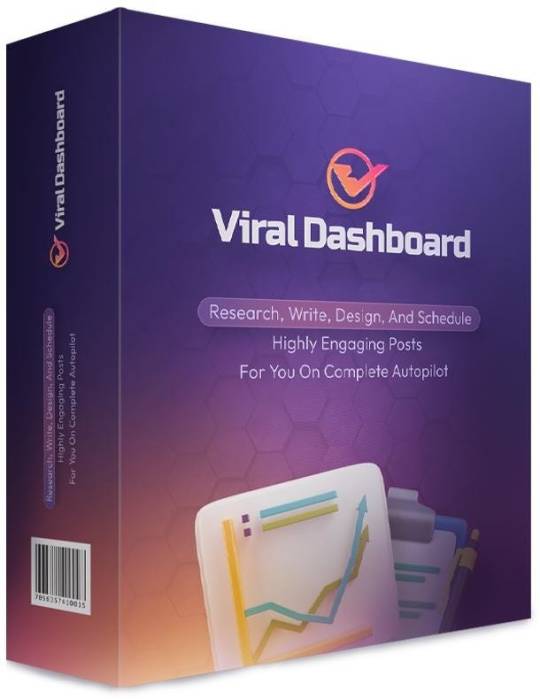
Introduction: Elevate Your Marketing Strategies to New Heights
Embark on a journey of marketing excellence with the ViralDashboard AI v4 — Agency Silver Edition. This cutting-edge platform is designed to revolutionize your marketing strategies, offering unparalleled tools and features that empower agencies to soar to new heights of success. Discover the transformative capabilities of AI-driven marketing, bringing innovation, efficiency, and effectiveness to the forefront of your campaigns.
AI-Powered Insights: Unleashing Intelligent Marketing Strategies
In the heart of ViralDashboard AI v4 lies its AI-powered insights, a game-changer for agencies seeking to stay ahead in the competitive landscape. Leverage intelligent data analysis, trend identification, and predictive analytics to make informed decisions. Tailor your strategies with precision, ensuring each campaign resonates with your target audience for maximum impact and engagement.
Automated Campaign Management: Effortless Efficiency at Your Fingertips
Experience the pinnacle of efficiency through ViralDashboard AI v4’s Automated Campaign Management. From scheduling posts across multiple platforms to tracking campaign performance, this feature streamlines your workflow, allowing your agency to focus on creativity and client satisfaction. Witness the power of seamless automation, saving time and resources while boosting overall productivity.
Content Creation Revolution: AI-Infused Creativity Unleashed
Revolutionize content creation with ViralDashboard AI v4’s AI-infused capabilities. From generating captivating captions to designing visually stunning graphics, the platform’s AI engine elevates your creative output. Empower your agency to produce high-quality, engaging content consistently, captivating your audience and reinforcing your brand’s unique identity.
Social Media Mastery: Dominate Every Platform with Ease
Dominate the social media landscape effortlessly with ViralDashboard AI v4’s Social Media Mastery tools. From comprehensive analytics to cross-platform posting, this feature ensures your agency maintains a commanding presence on all major social networks. Stay ahead of trends, monitor competitor activity, and engage with your audience seamlessly, fostering brand loyalty and amplifying your reach.
Client Collaboration Hub: Strengthening Partnerships with Ease
Enhance client-agency collaborations through ViralDashboard AI v4’s Client Collaboration Hub. This centralized platform facilitates seamless communication, project management, and real-time reporting. Keep clients informed, address queries promptly, and demonstrate the tangible results of your efforts. Strengthen your agency-client partnerships through transparent and collaborative interactions.
Performance Analytics: Data-Driven Decision Making at its Finest
In the age of data, ViralDashboard AI v4’s Performance Analytics takes centre stage. Gain deep insights into campaign performance, audience behaviour, and content engagement. Harness this wealth of data to refine your strategies, allocate resources effectively, and demonstrate the tangible ROI of your campaigns. Elevate your agency’s decision-making process with the power of analytics.
Security Fortification: Safeguarding Your Digital Assets
ViralDashboard AI v4 prioritizes the security of your agency’s digital assets. With advanced encryption, secure data storage, and regular system updates, rest assured that your sensitive information remains protected. Focus on your marketing endeavors with confidence, knowing that ViralDashboard AI v4 is fortified against potential threats, ensuring the safety and integrity of your data.
24/7 Support: Unparalleled Assistance Every Step of the Way
Experience unparalleled support with ViralDashboard AI v4’s 24/7 customer assistance. Our dedicated support team is ready to address your queries, provide technical guidance, and ensure a smooth user experience. Your success is our priority, and our round-the-clock support ensures you receive assistance whenever you need it.
Conclusion: Empower Your Agency with ViralDashboard AI v4 — Agency Silver
In conclusion, the ViralDashboard AI v4 — Agency Silver Edition is the catalyst your agency needs to thrive in the ever-evolving landscape of digital marketing. Elevate your strategies, streamline your operations, and achieve unparalleled success with the power of AI-driven innovation. Revolutionize your approach and lead your agency into a future where marketing excellence knows no bounds. Affiliate Disclaimer:
We are committed to transparency and providing valuable insights. The ViralDashboard AI v4 — Agency Silver Edition, featured on this site, may contain affiliate links. Should you choose to make a purchase through these links, we may earn a commission at no additional cost to you.
Rest assured, we only recommend products and services that align with our commitment to excellence. The ViralDashboard AI v4 — Agency Silver Edition has been carefully assessed, and we believe it brings exceptional value to marketing professionals and agencies. Your trust is of utmost importance to us, and we maintain the highest standards of integrity in our recommendations. If you have any questions or concerns regarding our affiliate relationships, feel free to reach out. Thank you for choosing us as your source of information, and we look forward to supporting your journey with ViralDashboard AI v4 — Agency Silver Edition
#marketing#usa girls#makeup#100 days of productivity#beauty tips#green eyes#makeup photography#lipstick#poster#makeup inspo
5 notes
·
View notes
Text
The Latest Trends and Innovations within the Vaping Industry
It's been an incredible transformation that has taken place during the last ten years regarding the vape industry, spearheaded by consumer demand, emerging technologies, and continuous regulation. With the market showing new trends and changing continuously, vaping is also changing from a niche topic into an active, competitive area of business. In the paper, we review several recent hot events that took place within vaping and recommend NEPA Wholesale as a reliable vape supplier for those businesses eager to find high-quality goods among the offered vape wholesale merchandise.
1. Sustainable and Eco-Friendly Practices
Environmental awareness is driving every industry, and vaping is no exception. Vape manufacturers are investing in recyclable and biodegradable components in vape devices and packaging. Refillable pods and devices with longer life spans are gaining traction, cutting down on waste and appealing to eco-conscious consumers.
2. Advancements in Pod Systems
Pod systems have revolutionized vaping with their convenience, portability, and ease of use. Recent innovations include:
Improved battery life: Devices now last longer on a single charge.
Leak-proof designs: Better engineering cuts down on mess and wasted e-liquid
Customizable options: Adjustable airflow and wattage settings appeal to individual tastes.
These features make pod systems a go-to choice for both beginners and seasoned vapers.
3. Nicotine Alternatives and Customization
With increased health awareness, the demand for alternatives to traditional nicotine-based products is also growing. Manufacturers are offering low or zero-nicotine options and a variety of flavors derived from natural ingredients. Some companies are even experimenting with synthetic nicotine, which provides a much smoother and less irritating experience.
4. Innovative E-Liquid Formulations
E-liquid innovation remains one of the main drivers of consumer interest. The latest trends in this regard include:
Salt Nicotine: Offers a smoother throat hit and faster absorption.
Cannabinoid-infused options: Options for CBD and THC-infused e-liquids can also be seen in their markets, where sale is legally allowed.
Flavor variety: from classic tobacco to exotic fruit mixes; the flavors range so there's something for everyone to enjoy.
5. Technological Integration
Smart technology is finding its place in vape devices. Bluetooth-enabled vapes allow users to track usage, customize settings, and even lock devices for safety. These smart features give users more control and a customized experience.
6. Regulatory Compliance and Quality Assurance
As the nose of regulation tightens worldwide, compliance and high-quality products cannot be more stressed. Reputed suppliers such as NEPA Wholesale have taken the onus by offering products meeting strict standards for safety and regulatory compliance. Renowned for reliability, NEPA Wholesale offers an array of top-notch vape devices, e-liquids, and accessories to retailers.
Why Choose NEPA Wholesale?
NEPA Wholesale has earned a reputation as a reliable partner within the vaping industry. Their focus on quality, competitive pricing, and excellent customer service has positioned them as the primary supplier for businesses of all sizes. Whether you are a new retailer or an established player, NEPA Wholesale ensures that you have the latest products to meet consumer demand and regulatory requirements.
The Rise of Disposable Vapes
Disposable vapes have started to gain a high popularity curve because of their ease and affordability. In fact, these devices easily attract beginners and people that seek simplicity. Innovations in the capacity of batteries and e-liquid significantly extend the life of disposable vapes, making them more economic and eco-friendlier.
Conclusion
The vape industry is continuously changing and upgrading itself, from innovations addressing sustainability to cutting-edge technologies, towards a more secure future of vaping. The partnership with a reputable and reliable supplier like NEPA Wholesale guarantees that businesses have constant access to high-quality merchandise and the expertise in this particular line of trade. The ability to innovate, to change with shifting trends, is what shall be most needed in order for any company to become highly successful in this fiercely competitive market.
0 notes
Text
Custom Car Services: Revolutionizing Your Driving Experience
Contact Us On: 0418 127 775
In today’s fast-paced world, where individuality and convenience reign supreme, custom car services are gaining immense popularity. From aesthetic upgrades to performance enhancements, custom car services transform vehicles into personalized masterpieces. Whether you're a car enthusiast or someone seeking practicality, these services cater to all. In this guide, we’ll dive deep into the world of custom car services, exploring their benefits, types, and why they’re worth considering for your vehicle.

What Are Custom Car Services?
Custom car services encompass a range of modifications and upgrades tailored to meet a vehicle owner’s unique needs and preferences. Unlike standard maintenance or repair work, these services aim to personalize your vehicle, making it stand out while improving performance, comfort, and functionality.
Benefits of Custom Car Services
Customizing your vehicle offers numerous advantages, both practical and aesthetic. Here are some key benefits:
1. Personalization
Custom car services let you infuse your personality into your vehicle. Whether it’s a unique paint job, custom interior upholstery, or specialty lighting, these modifications make your car uniquely yours.
2. Enhanced Performance
From upgrading your engine for more horsepower to installing advanced braking systems, performance customization improves your car's efficiency and capabilities.
3. Improved Resale Value
A well-maintained, customized car can fetch a higher price in the resale market, especially if modifications align with current trends.
4. Increased Comfort
From luxury seating to advanced soundproofing, comfort-focused upgrades elevate your driving experience, making long journeys a breeze.
5. Unique Aesthetics
Custom car services help you break away from the generic designs offered by manufacturers. Think sleek spoilers, bold alloy wheels, or custom paint jobs.
Types of Custom Car Services
Custom car services are as varied as the needs of car owners. Let’s explore some popular types:
1. Exterior Modifications
Custom Paint Jobs: From matte finishes to intricate designs, a fresh coat of paint can entirely transform your car’s appearance.
Body Kits: Spoilers, side skirts, and bumpers give your car a sporty and aggressive look.
Lighting Upgrades: LED headlights, under-glow kits, and taillight tints add a modern touch.
2. Interior Customization
Luxury Upholstery: Replace your car's standard seats with leather, suede, or custom-stitched fabric for a more sophisticated feel.
Tech Upgrades: Install high-end infotainment systems, advanced navigation units, or rear-seat entertainment setups.
Ambient Lighting: LED interior lights create a calming or energizing ambiance.
3. Performance Enhancements
Engine Tuning: Boost your car’s power and fuel efficiency with professional tuning.
Suspension Upgrades: Enhance handling and ride quality with custom suspension systems.
Exhaust System Modifications: A custom exhaust improves your car’s sound and overall performance.
4. Wheel and Tire Upgrades
Custom Rims: Eye-catching alloy wheels are an excellent way to elevate your car’s look.
Specialty Tires: Whether for off-roading or racing, the right tires improve performance.
5. Safety Features
Dash Cams and Sensors: Protect your investment with features like parking sensors, rear-view cameras, and dash cams.
Enhanced Brakes: Upgrade to ceramic or performance brake systems for safer driving.

How to Choose the Right Custom Car Service Provider
Finding the right custom car service provider is crucial to achieving the desired results. Here’s what to look for:
1. Expertise and Experience
Choose providers with a proven track record and expertise in the specific customizations you seek.
2. Quality Materials
Ensure that the materials and parts used for customization are high-quality and durable.
3. Comprehensive Portfolio
Ask to see their previous work. A good service provider will have a portfolio showcasing diverse projects.
4. Customer Reviews
Check online reviews and ratings to understand the quality of service offered.
5. Transparent Pricing
Choose a provider who offers clear pricing without hidden costs.
Is Customization Worth the Investment?
Custom car services require a financial commitment, but they are often worth every penny. Here’s why:
They improve your car’s functionality, making it better suited to your needs.
Customized cars often stand out, turning heads wherever you go.
The resale value of a thoughtfully customized vehicle can often offset the initial investment.
If you’re someone who values quality, aesthetics, and performance, custom car services are an excellent investment.
Future Trends in Custom Car Services
The automotive industry is evolving rapidly, and custom car services are no exception. Emerging trends include:
Smart Car Integration: From voice-controlled features to smart dashboards, technology is revolutionizing customization.
Eco-Friendly Modifications: More people are opting for electric conversions and sustainable materials.
3D Printing: This cutting-edge technology allows for precision in creating custom parts.
Conclusion
Car Consultants are more than just an upgrade—they’re an opportunity to make your vehicle a true reflection of your personality and lifestyle. With options ranging from aesthetic tweaks to performance enhancements, there’s something for everyone. Whether you’re looking to boost your car’s appearance, functionality, or both, investing in customization is a decision you won’t regret.
0 notes